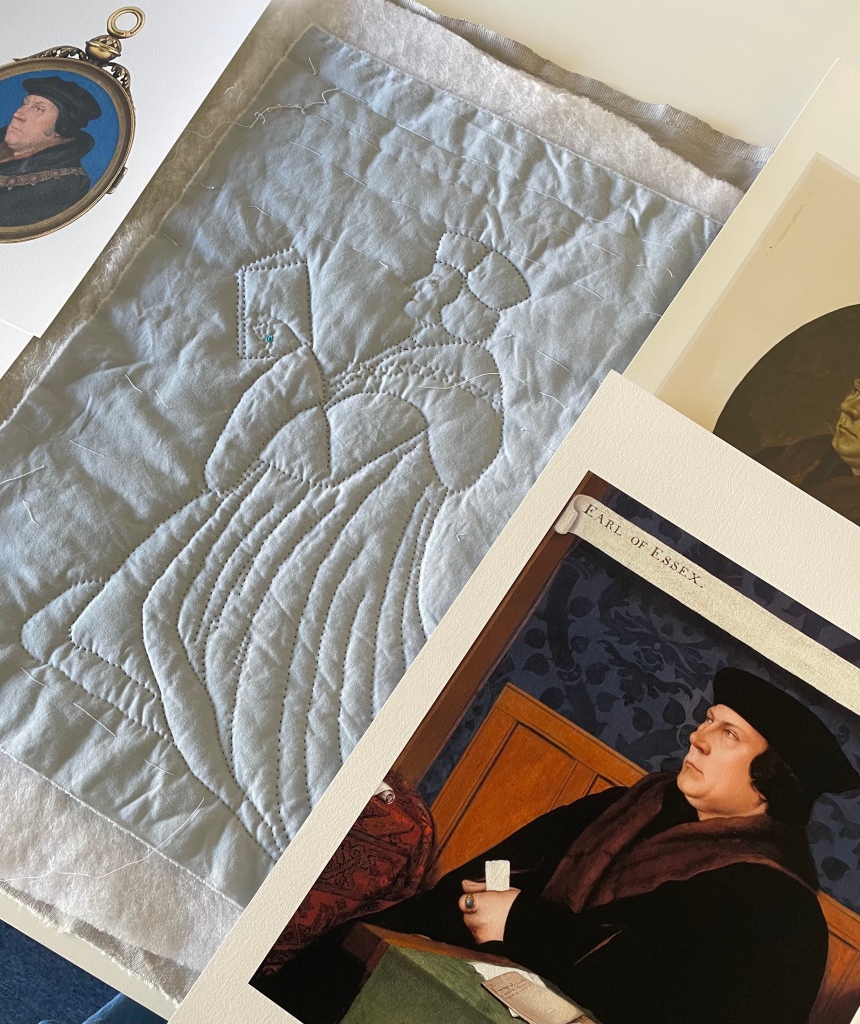In recent weeks, my thoughts have turned to the remembering of the dead, to commemorations, and the marking of lives.

In Hilary Mantel’s Bring Up the Bodies, Thomas Cromwell considers the tombs of the ancestors of the nobility:
men armoured cap à pie in plate and chain links, their gauntleted hands joined and perched stiffly on their surcoats, their mailed feet resting on stone lions, griffins, greyhounds … We think time cannot touch the dead, but it touches their monuments.
Hilary Mantel, Bring Up the Bodies: Falcons
Coming from modest beginnings, Cromwell himself had no family tomb. And there was no elaborate tomb for him following his execution in 1540. His remains were buried in the Chapel Royal of St Peter ad Vincula, within the Tower of London, where there is a brass plaque that lists individuals “buried in this chapel”; and there is a plaque marking the site of his execution on Tower Hill.

In the Cromwell trilogy, Mantel wrote of the tomb commissioned by Cardinal Wolsey – “the black marble, the bronze, the angels at his head and foot” (Wolf Hall, Entirely Beloved Cromwell). Wolsey was not buried in his tomb; in the trilogy, the King expresses a wish to be buried in the “sarcophagus of black touchstone, in which the cardinal never lay” (The Mirror and the Light, Wreckage II). But Henry was not buried in it either: the sarcophagus is now in St Paul’s Cathedral, and is part of the tomb of Admiral Lord Nelson. The Wolsey Angels, which never found their way to Wolsey’s tomb, are now in the collection of the Victoria and Albert Museum, after centuries of separation and misidentification.
Looking at the place of tombs in the three novels, I started to think about other memorials. My imagination was particularly captured by the idea of weeper tombs – those tombs that feature kneeling figures, praying for the soul of the departed.
In Westminster Abbey, I visited the elaborate tomb of Margaret Douglas, Countess of Lennox (who plays a significant role in The Mirror and the Light), and looked at the weepers that represent her sons and daughters. And I started drafting out some weepers of my own.


Through a series of leaps and tangents, I started to muse on the identity of the characters in Mantel’s trilogy who might weep for Thomas Cromwell.
Nobody, he thinks, will ever cry for him.
Hilary Mantel, Wolf Hall, Across the Narrow Sea
I think Cromwell is wrong about this. What about Christophe? Rafe?
I have started to compile a list of weepers who are to be quilted, beginning with Cromwell himself. These weepers won’t be praying. They will be reading. And they will be reading Hilary Mantel’s Cromwell Trilogy.

